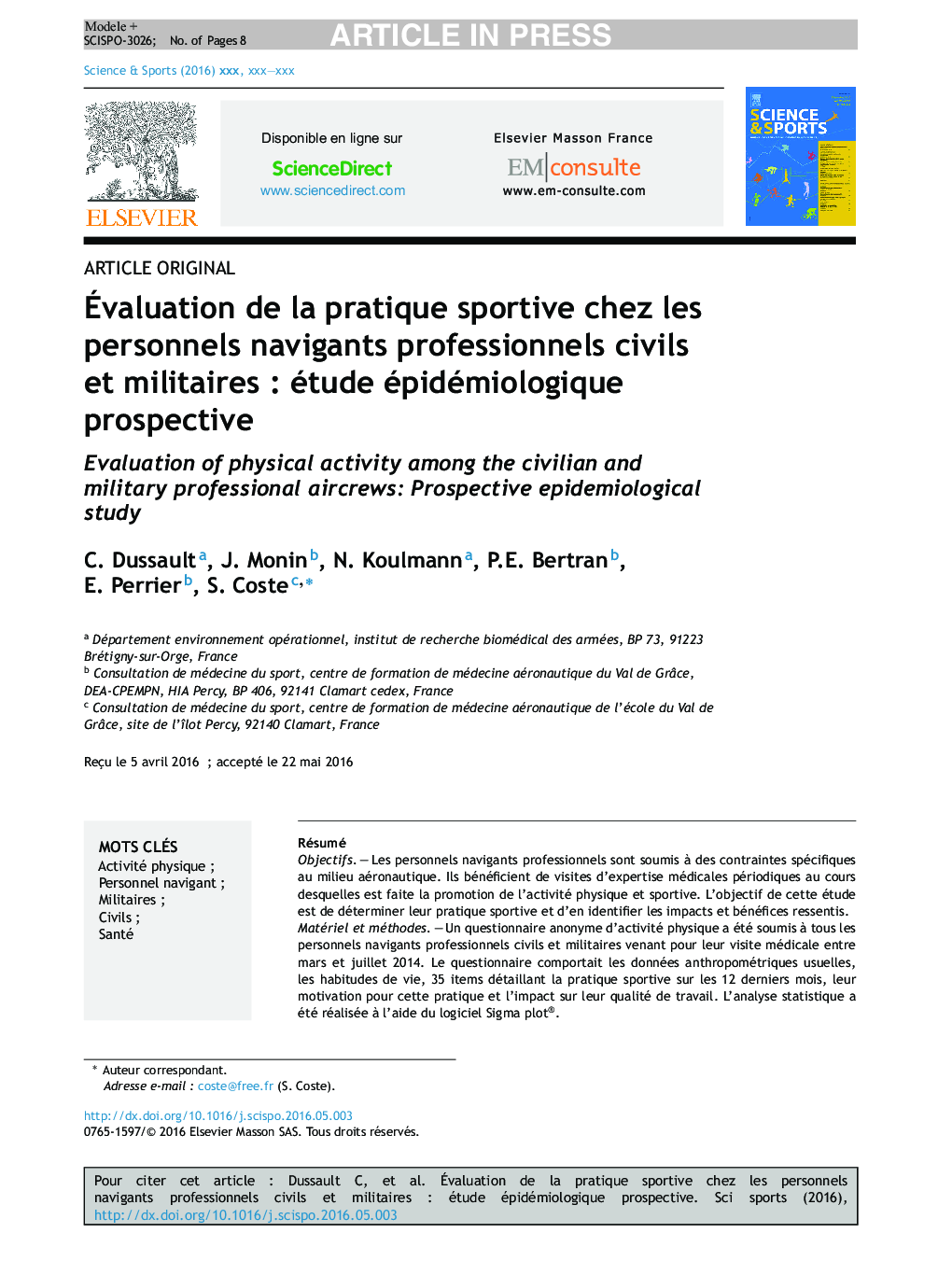| Article ID | Journal | Published Year | Pages | File Type |
|---|---|---|---|---|
| 5712260 | Science & Sports | 2016 | 8 Pages |
Abstract
A total of 1810 aircrews (39.81 ± 9.73 years) completed the study : 64.8% are civilians and 79.3% are men. The mean body mass index is 24.10 ± 3.07 kg/m2 and 15.4% are smokers. In total, 94.2% of the aircrews have a physical activity but only 29.8% practice more than twice per week. Military aircrews have more physical activity than civilians in terms of frequency and time volume (p < 0.01). Running and trail are the main activities (62.5%), followed by cycling (36%) and swimming (34.2%). Team sports appear poorly represented (14%). More than 90% of all subjects practiced sports activities outside of their working hours. In total, 19.8% of military use dedicated and supervised niches. During holidays, one third of the subjects increase their practice and 48.3% practice a sport that requires a particular environment. Major motivational criteria are health and welfare (58.7%) and personal pleasure (50.6%). Cohesion in relation with physical activity is important for only one third of aircrews with a significant difference between military and civilian (37.3% vs 27.1%; p < 0.01). According to 89% of the aircrews, sport improves their missions, facilitating sleep (78.1%) and improving tolerance to stressful situations (72.2%). Professional downtime related to a sports injury is reported by 11.1% of civil against 27.7% of military aircrews (p < 0.01).
Related Topics
Health Sciences
Medicine and Dentistry
Orthopedics, Sports Medicine and Rehabilitation
Authors
C. Dussault, J. Monin, N. Koulmann, P.E. Bertran, E. Perrier, S. Coste,
